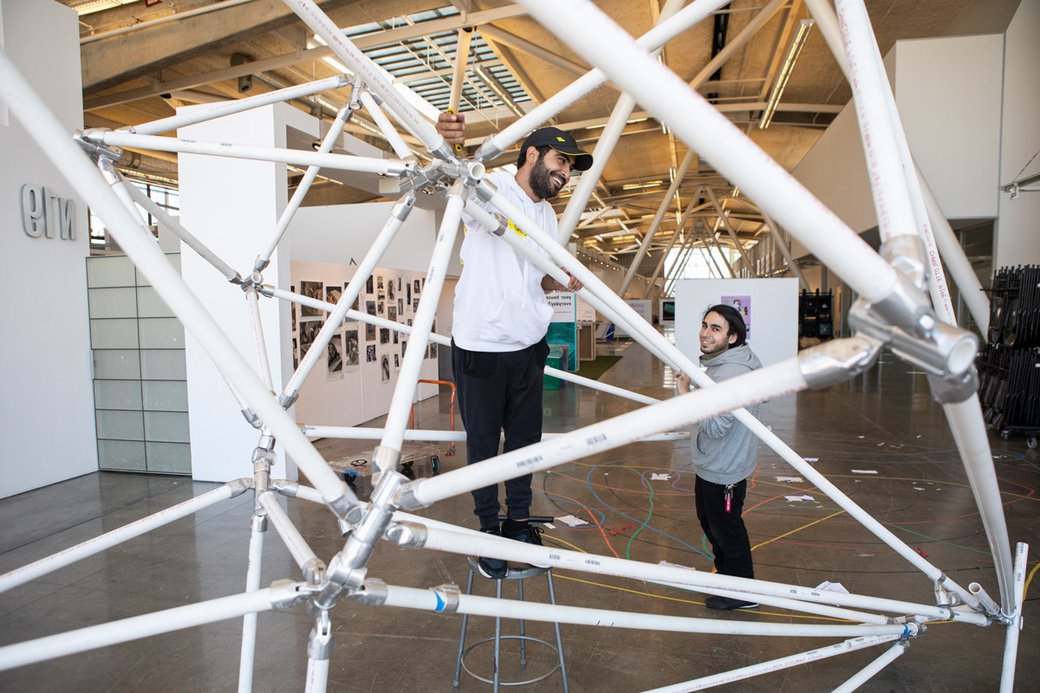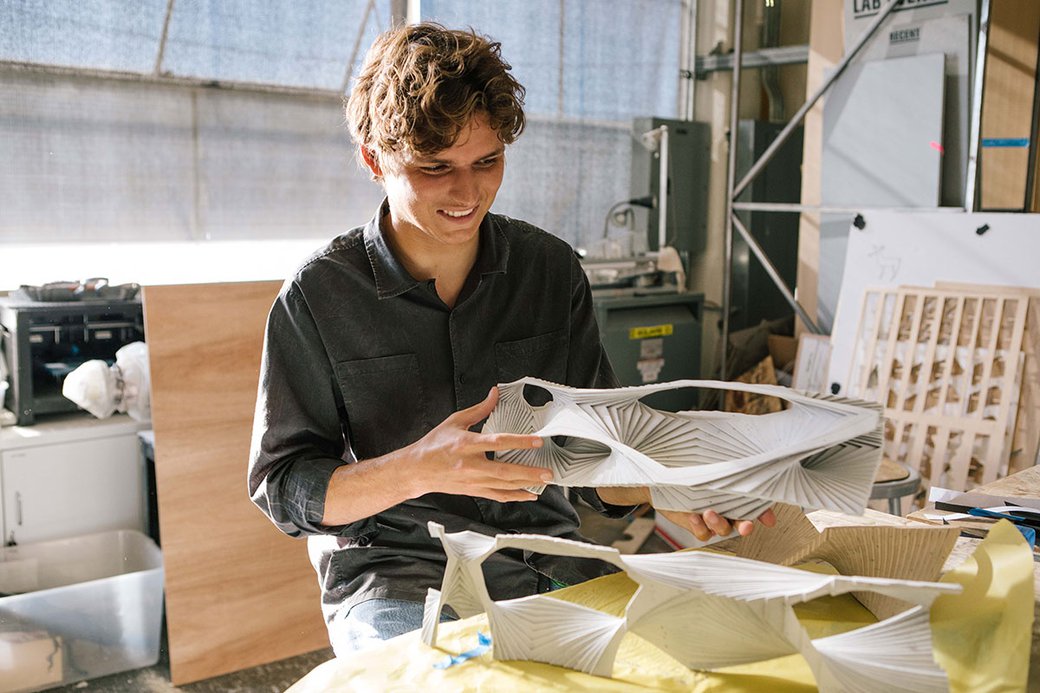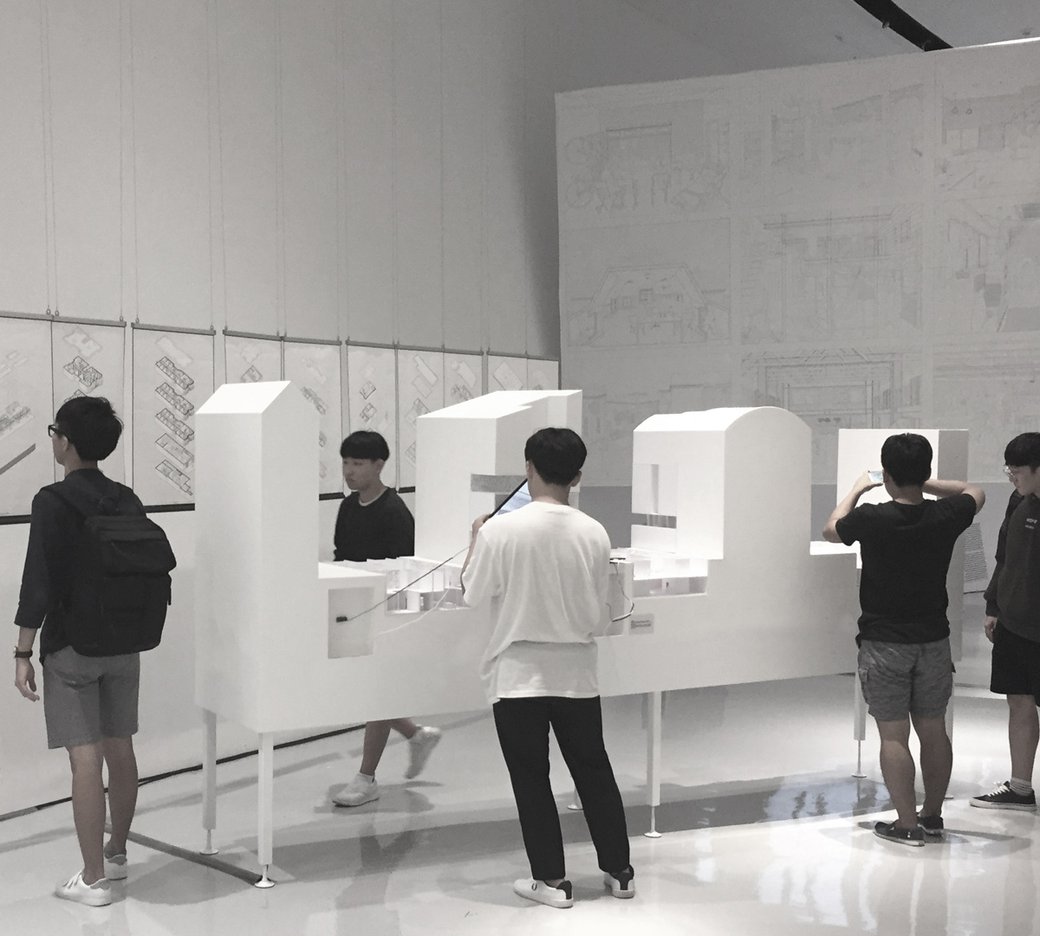MAAD concentrations
Choose from three unique degree concentrations during an intensive year of advanced architectural design.
Overview
Specialize in emerging fields

Specialize in emerging fields
The Master of Advanced Architectural Design (MAAD) is a one-year, STEM-designated post-professional degree that offers three distinct areas of concentration: Digital Craft, Urban Works, and Experimental History. You’ll hone in on one area and tailor your course sequences to fit your research focus.
Digital Craft
Experiment with digital design technologies

The MAAD Digital Craft degree is STEM-designated, uniting designers, roboticists, and computational thinkers who want to engage, question, and expand disciplinary boundaries. You’ll work together to explore reciprocity and synergy between bits and atoms, the digital and the physical, and digital code and material logic. Digital Craft thrives at the intersection of creative and technical domains, whose boundaries are elastic, continuously evolving, and highly experimental.
Your coursework ties directly to our work in the Digital Craft Lab (DCL). The DCL supports and promotes advanced research in architectural design, digital fabrication, material science, data visualization, and robotics. At the intersection of the arts and sciences, you’ll routinely collaborate with engineers, scientists, artists, architects, and designers to develop innovative frameworks and prototypes.
Areas of special focus
- Parametric design and advanced computation
- Digital fabrication and robotic technologies
- Interactive technologies and responsive environments
- Building information modeling (BIM)
- Advanced simulation and visualization
- History and theory of digital design
- Experimental and emerging technologies
Recent visiting lecturers
- Marc Fornes (THEVERYMANY)
- Kas Oosterhuis (Hyperbody / TU Delft)
- Hilary Sample (MOS)
- Philip Beesley
- Saul Griffith (Otherlab)
- Achim Menges (ICD)
- Gregg Pasquarelli (SHoP Architects)
- Theodore Spyropoulos (AA/minimaforms)
- Heather Roberge (Murmur)
- Francois Roche (R&Sie(n))
- Farshid Moussavi (FOA)
- Shohei Shigematsu (OMA)
- Michelle Addington (Yale University)
- Sanford Kwinter (Harvard University)
- Natalie Jeremijenko
Additional facilities and resources
The facilities on our campus include architecture studios with access to a suite of fully equipped shops for various scales of fabrication and multiple computer labs for digital production:
- Dedicated wood, metal, and mixed-material workshops, as well as a plaster room and welding shop
- Rapid Prototyping Studios with laser cutters, 3D printers, and a CNC router
- Hybrid Lab, sponsored by Intel, provides an interdisciplinary space for making and hacking technologies
- New Materials Resource Center, the only library of its kind housed at an art school, offers a comprehensive, interdisciplinary collection of traditional and innovative material samples
- Shops for fabrication techniques in sheet forming, machining, pattern making, and mechanical fastening
Urban Works
Leverage architectural design to reimagine cities

From sanctuary cities to micro-utopias, and from public infrastructure to investment opportunities, urbanization today demands that designers find new ways to create bridges between laws, markets, and publics. In this spirit, the MAAD Urban Works concentration is dedicated to shaping both the spaces and protocols of the built environment.
Your coursework ties directly to our efforts in the Urban Works Agency (UWA). The UWA is dedicated to shaping both the spaces and protocols of the built environment, from the scale of furniture to cities and territories at large, and across private practices, municipal agencies, and entrepreneurial ventures. You’ll routinely collaborate with interdisciplinary partners to produce original research and design projects disseminated through books, exhibitions, and interactive media. The MAAD Urban Works degree is STEM-designated.
Areas of special focus
Each program cycle is framed as a think tank on a set of topical issues, which span across the advanced studios and seminars. Recent investigations include:
- Housing affordability and collective living
- Politics of energy
- Resilient cities and sea-level rise
- Pop-up urbanism
- Climate risk
- Public engagement and decision-making processes
Pedagogical approach
You’ll focus on research-driven and project-oriented design in advanced studios and urban elective seminars, while taking part in workshops, symposia, and other events. The Urban Works curriculum frames in-depth investigations associated with architecture’s disciplinary expertise alongside broad, extra-disciplinary studies in urban geography, ecology, and digital technology. You’ll also routinely work in partnership with urban agencies, nonprofit organizations, and industry leaders. This exposure prepares you to join and form experimental design practices of your own that can provocatively shape urban issues. Each year, we focus on a particular theme as we create various projects in the form of publications, exhibitions, symposia, and more. You’ll use these acts of production to launch your next career trajectory.
Additional facilities and resources
You’ll enjoy dedicated studio space with access to state-of-the-art workshops and computer labs for fabrication and digital production at multiple scales. You’ll also work side-by-side with colleagues from our Interaction Design and MBA in Design Strategy programs. Under one roof, CCA offers access to a range of facilities and resources:
- Rapid Prototyping Studios with laser cutters, 3D printers, and a CNC router
- Workshops specializing in wood, metal, and mixed-material processes, as well as a plaster room and welding shop
- Hybrid Lab maker space sponsored by Intel
- New Materials Resource Center
History/Theory/Experiments
Bring architectural history to life

The MAAD History/Theory/Experiments concentration is an intense year of advanced study in architectural history, theory, and criticism. The year culminates in an independent research project oriented toward public exhibition, publication, or digital dissemination. Your coursework ties directly to our work in the Experimental History Project, an interdisciplinary platform for exhibitions, research, and events exploring experimental practices of architecture and urban history. The MAAD HTX degree is STEM-designated.
Areas of special focus
The MAAD History/Theory/Experiments concentration exposes students to current critical and curatorial practices, including:
- Experimental preservation techniques such as digital scanning and reproduction
- Politically engaged forms of spatial activism
- New media such as apps, databases, and other digital platforms for “writing” history
- Archival and historical research methods
- Architectural writing and criticism
Recent visiting lecturers
- Beatriz Colomina (Princeton University)
- Winnie Wong (UC Berkeley)
- Pier Vittorio Aureli (The Berlage Institute)
- Neil Brenner (Harvard University)
- Anthony Vidler (Brown University)
- Keller Easterling (Yale University)
Build skills in a hyperfocused research area